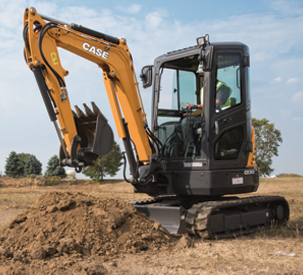Tips for Hydraulic Hammer Maintenance
Hydraulic breakers often have relatively short service lives. Smashing through hard material takes its toll, and these attachments deal with a lot of stress. Operator error can break your hydraulic hammer immediately, while proper operation can greatly extend its lifespan. We’ve put together some maintenance and operating tips for your hydraulic breakers to help extend their lifespans.
Hydraulic hammer maintenance best practices
1. Complete a visual inspection before operation – Operators should check their hydraulic hammer before beginning work. A quick inspection helps them identify any parts that have excessive wear or may be close to breaking. They should look at hydraulic hoses, the breaker shell, attachment pins, tool retainer and locks, and the tool point.
2. Lubrication is key – The most important maintenance task for hydraulic breakers is greasing it regularly in order to lubricate the components and clear any debris buildup. We recommend using a No. 2 lithium based grease with 3% moly rated to 500 degrees Fahrenheit to help prevent metal-on-metal contact. Compared to standard lubricants, this type of grease is made for the higher temperatures experienced by your hydraulic hammer.
3. Check the nitrogen pressure – Maintaining the correct nitrogen pressure is critical for ensuring top performance and lengthening the lifespan of your hydraulic breaker. The right pressure will vary based on how you are using your hydraulic breaker as well as the temperature and the conditions you are working in. We recommend checking your owner’s manual for more information on the best nitrogen pressure for your hydraulic hammer.
4. Don’t forget the bushings – The bushings in your hydraulic breaker should be inspected about every 100 hours. They usually experience the most wear on the front and back faces, both of which can cause piston misalignment and hurt other components in your attachment. Many manufacturers will provide a bushing wear inspection tool to rotate lower bushings 90 degrees to provide new wear faces and extend service life.
Hydraulic breaker operation best practices
1. Match your breaker to the carrier – Your excavator or other carrier machine needs to be the right weight class and have sufficient hydraulic pressure and flow to operate your hydraulic hammer attachment. Too much pressure can cause excessive heat and wear, while too little can reduce the effectiveness of your attachment.
2. Don’t stay in one spot too long – We recommend not hammering the same spot for more than 15 seconds. If the material has not begun to fracture after that amount of time, then reposition your hydraulic breaker on the surface. To make it as effective as possible, you should also always have the hammer’s tool tip perpendicular to the material being broken.
3. Avoid blank firing – Blank firing can lead to problems with your hydraulic hammer. To prevent it, the breaker’s tool tip must be in contact with the surface, and there must be downforce on the top of the breaker.
4. Don’t pry material – Remember that your hydraulic breaker is not a lever. Once you break up your concrete or other material, use a bucket or grapple to remove it from the site.
5. Keep your hydraulic breaker upright – Avoid laying your hydraulic hammer down on its side, as this can cause hot seals to be deformed by the weight of the attachment.
Follow these hydraulic breaker tips, and contact our team with any questions you have!

